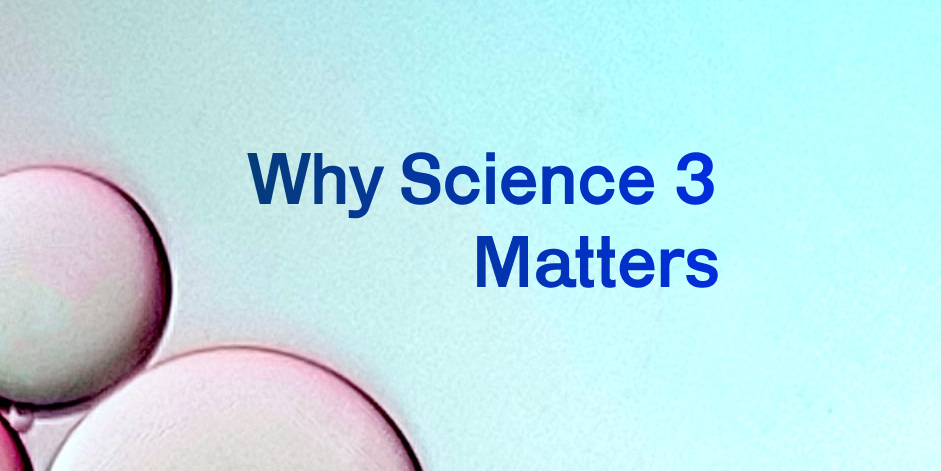Science 1 (the “scientific revolution”, roughly 1543-1940) was about experimentation, discovery and the "rapid accumulation of knowledge." Funding mostly came through the Church, and knowledge mostly accrued within the scientific fields themselves.
Science 2 (roughly 1940-today) is about research and discovery through centralized grant funding. Traditional funders like the NIH and NSF, funnel money into projects according to their levels of risk. Labs will then quietly funnel left-over funds to higher-risk projects that would never receive funding. Knowledge mostly accrues to gatekeepers like institutions, publishers, pharma, and institutional investors.
We are now at the beginning of Science 3, which combines new forms of funding with the truth-seeking spirit of Science 1 and the selection mechanisms of Science 2.
——
Why does Science 3 matter?
By now, we're all familiar with Dr. Katalin Karikó's story. Dr. Karikó, who spent much of her life studying the potential of mRNA as a therapeutic, was shunned for her "scientifically radical" ideas. Rejection after rejection, her research was deemed too risky to fund. Underfunded but persistent, she eventually was able to pinpoint the mechanism that enabled mRNA-based therapeutics.
The NIH is the science equivalent of a social platform with strong network effects. Receiving funding from the NIH is akin to "joining the boys' club" and accruing prestige, citations, and more funding all become easier. If a research topic is outside the risk parameters of the NIH however, all that goes away, like in Dr. Karikó's case.
Dr. Karikó's story should serve as a warning, and not as an inspiration. Many other scientists, like Dr. Carl Merril, have lost funding, faced ridicule, and eventually retired from science… only for their research to eventually be redeemed by renewed interests from the NIH decades later. Scientific progress should not depend on the resilience of rebellious scientists.
Additionally, Science 2.0 is a zero-sum game. "Publish-or-perish" and novelty-chasing status games, paired with gatekeeping mechanisms like peer review, have increasingly pushed researchers to engage in scooping, p-hacking, and worse forms of scientific malfeasance.
Even with its problems, Science 2 doesn't need "fixing". Science needs more ways to do open, transparent, and positive-sum science — and that's "Science 3".
——
Science 3 does not replace Science 2
Instead, Science 3 guides its participants toward the common goal of pursuing, accumulating, auditing, and sharing knowledge.
New mechanisms of funding, curation, gatekeeping, and peer review could align labs to spread research risk and share the upside from new discoveries amongst all participants.
New tools could track and fairly assess the value of contributions from collaborators, CROs, and core facilities. Upside would range from recognition (publications, citations, social media), to grant and investment funding (both ex-ante and ex-post), and intellectual property. Value accrues to all participants, who benefit from ensuring that the science is sound, and the data is accurate.
New mechanisms would also open up opportunities to align "lab-adjacent" individuals — like bioinformaticians, engineers, science communicators, project managers, and others outside the lab (or even outside science) to contribute toward the success of the project — since value accrues to all participants.
Credit and authorship would be assigned to those who do the work. Battles over first-middle-last authorship would be put to rest. Those who perform experiments and contribute and analyze data should be given proper credit. All participants share both risks (if the experiments fail) and upsides (future grants, IP licensing, revenue share) based on the share and value of their contributions.
Peer review would become more like peer mentorship and collaboration, and less like gatekeeping. "Never attribute to malice that which is adequately explained by [inexperience]". Improve the science by improving the scientists. Reproducing experiments and re-analyzing data will only increase the confidence in the scientific output.
Research audits would also replace peer review. Similar to audits in the security or financial world, research audits need to be systematic, transparent, and compensated. Conflicts of interests should be easily auditable, without needing the auditors' disclosure.
Curators would become the new publishers. By carefully selecting scientific works to their "portfolios" — through funding contributions and due diligence through another layer of independent audits — they lend their brand, scientific scrutiny, and social proof to promising projects. Their data and findings would be published for the public. They too would take part in the upside.
Finally, anyone — a regular person, a foundation, a biotech investor — should have an equal opportunity to evaluate, contribute, and partake in the success of a Science 3 project. This could involve science writing, volunteering, participating in studies, marketing, recruiting specialists, contributing to citizen science projects, and providing funds.
Akin to open source projects, Science 3 requires participants to play a positive-sum game by continuously and transparently sharing progress. This includes keeping data available to independent auditors, lab notes up-to-date, and freezer samples properly tagged and indexed.
——
We're already seeing new organizations experimenting with funding models like New Science, Altos Labs, Arcadia Science, ARC Institute, Nucleate, and Flagship Pioneering free up scientists to focus more on science, and less on grants. Molecule's IP-NFTs lets more people participate in the ownership of science. DAOs like VitaDAO and LabDAO are becoming modern iterations of the Royal Society. And bioDAO is gearing up as the web3 funding and investing arm in life sciences.
Before Science 3, researchers had to spend a significant amount of time writing grants and playing academic status games. Science 3 offers new mechanisms that align all participants towards pursuing, accumulating and sharing knowledge in a positive sum way — and will hopefully create a friendly environment for "fringe sciences" like mRNA-based therapeutics — to thrive.
Many thanks to Jessica, Niklas, and Rusho for great conversations and ideas.
This post was inspired by Chris Dixon’s post “Why Web3 Matters”, Packy McCormick’s writing at Notboring.co, and Jessica’s JessBio blog on web3 and techbio.
Also thanks to Jessica for edit and revision suggestions.




